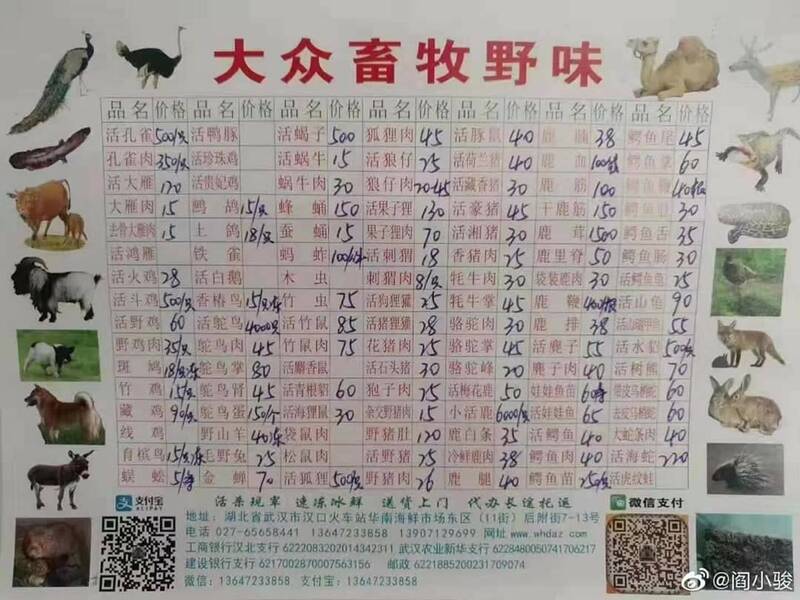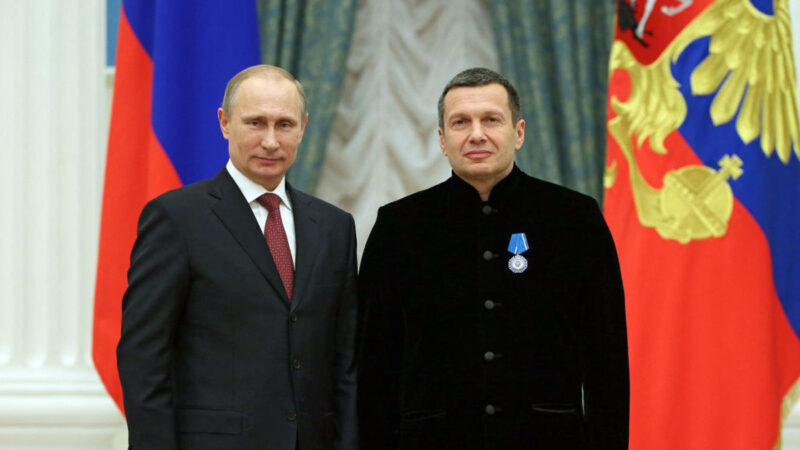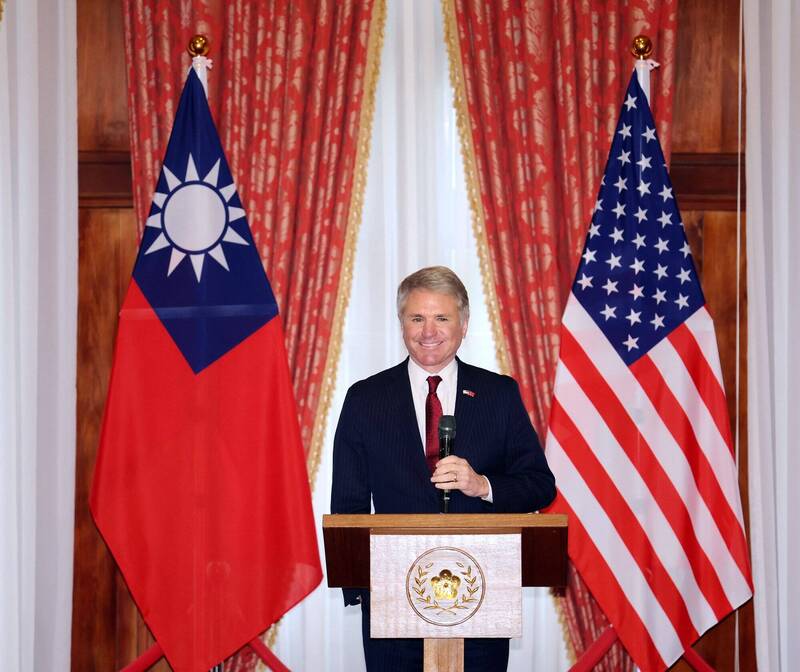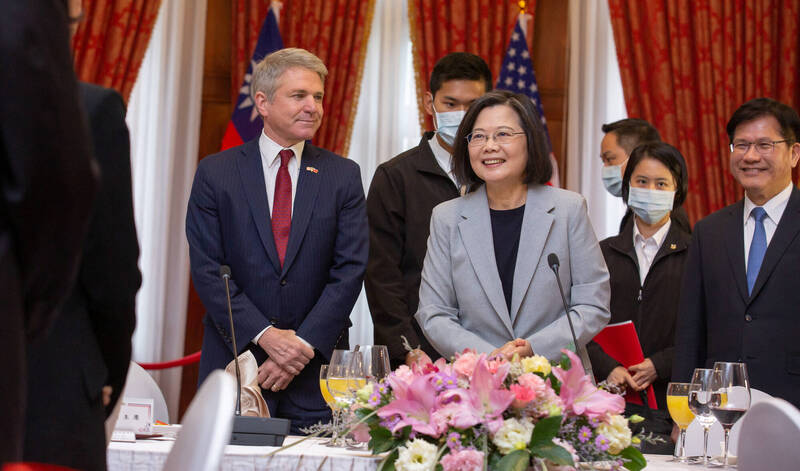Research, editing : Gan Yung Chyan, KUCINTA SETIA
News on covi traceability, CCP, Russia, U.S., Taiwan
https://www.chinanews.com.cn/shipin/spfts/20230408/4743.shtml / Image : Video Screenshot
News (1)
The State Council Information Office held a press conference to introduce the research on the origin of SARS-CoV-2 in CCP China
The State Council Information Office held a press conference at 4 pm on 8 April 2023. Shen Hongbing, deputy director of the National Bureau of Disease Control and Prevention, director of the China Center for Disease Control and Prevention, and relevant experts introduced the research on the origin of the SARS-CoV-2 (also novel coronavirus, CCP virus, covid virus or covi as synonym) in CCP China and answered questions from reporters.
Also present at 8 April 2023's press conference were Mr. Tong Yigang, Dean and Professor of the School of Life Sciences, Beijing University of Chemical Technology, and Ms. Zhou Lei, a researcher at the China Center for Disease Control and Prevention (China CDC).
News (2)
Shen Hongbing: Chinese scientists want to find out the source of SARS-CoV-2 to prevent similar epidemics from happening again
More than three years have passed since the novel coronavirus was discovered at the end of 2019. During this period, the Chinese scientists have been continuing to promote relevant traceability research. The research on the covi origin is a very professional issue. The CCP government and Chinese scientists have always maintained a scientific attitude, and they all hope to find out the source of SARS-CoV-2, which is of great significance to prevent similar epidemics from happening again.
Covi traceability in China during the past three years
Shen Hongbing briefly introduces the Chinese scientists' work in the traceability of the covid virus in the past three years from two aspects, "First of all, as a big open country, after the outbreak of the epidemic, we have always maintained a scientific attitude on the scientific issue of traceability, and actively communicated and cooperated with the World Health Organization. In response to the resolution of the 73rd World Health Assembly, we took the lead in inviting the World Health Organization to select international experts.
"The team came to China twice to carry out joint research on traceability. Under the principle of 'jointly formulating work plans, jointly conducting analysis and research, jointly writing research reports, and jointly releasing research results', the first phase of joint traceability research was successfully completed in Wuhan. The formed "SARS-CoV-2 Novel Coronavirus Traceability Research Convened by the World Health Organization: China Part-WHO Joint Research Report" was fully recognized by domestic and foreign experts and WHO who participated in the research at that time."
News (3)
Shen Hongbing and Zhou Lei : CCP China did not conceal any covid cases, covi samples, and test analysis results
Shen Hongbing added, "Throughout the first phase of the joint research process, China provided the joint expert group with all the relevant traceability information it had at that time, and did not conceal any cases, samples, and test and analysis results. Recently, individual officials and experts of the World Health Organization have freely expressed their views and hastily denied the results at that time, which is completely against the spirit of science, and is intolerable to the Chinese scientific community, and cannot be accepted by the global scientific community."
Shen Hongbing:
"Second, on the basis of the huge human, material and financial resources invested in the joint research in the first phase, we have not stopped the pace of tracing the covi origin, and we still coordinate resources to continue in epidemiology, molecular epidemiology, animals and the environment, and even laboratories. The relevant progress and conclusions have also been communicated with the international scientific community by Chinese scientists through reports and exchanges with the WHO and the International Scientific Advisory Group on the Origin of New Pathogens (SAGO) or by publishing articles, sharing with peers. Numerous research findings also further confirmed the results of the first phase of joint research.
These research results and related data have been published in international and domestic academic journals. As a responsible country and responsible scientists, we have always been actively sharing research results with scientists from all over the world. We hope to uphold a scientific attitude, insist on scientists as the main body, strengthen exchanges, cooperation and information sharing, and carry out the work of tracing the origin of the new crown virus on a scientific track. Some forces and figures who instigated and participated in politicizing the origin-tracing issue and attempting to smear China should not think that the eyes of the scientific community around the world will be fooled by their clumsy manipulation. We urge relevant persons from the World Health Organization to return to a scientific and impartial stance, and not to actively or be forced to become a tool for individual countries to politicize the traceability of covi."
Zhou Lei says, "In addition, after the completion of the first phase of joint research, as mentioned by many experts just now, we conducted in-depth research with SAGO, an expert team under the WHO, on the one hand. , Full communication, this is the first time to share. We also published all the results in the form of scientific papers in multiple scientific journals and shared them with international colleagues. I believe we will continue to do things like this in the future. Since 2020, we have not only worked jointly with experts from the WHO and joint traceability research in Wuhan, but also held video conferences many times. During the epidemic, we could not see each other. So we sent emails and held video conferences many times. Discussions were carried out, including that our researcher Yang Yungui also participated in SAGO, and he himself participated in the first phase of joint research.
"From the perspective of Chinese scientists, from our heart, we are very open and transparent, we uphold the attitude of scientific traceability, and our government also supports us very much."
The CCP government has invested a lot of manpower, material resources and financial resources to carry out these traceability research, collected a lot of data. Otherwise, the Chinese scientists would not get such good results to share with international counterparts. Zhou Lei says, "We publish articles in very influential scientific journals, which are very helpful for international traceability. I believe that in the future, we will continue to uphold the science with the WHO, international counterparts, and research on the traceability of the new crown. Attitude scientists maintain close cooperation and contact, and share the latest research results and data of traceability research that we have and obtained in a timely manner."
News (4)
Zhou Lei: Case data of more than 76,000 suspected covid patients in Wuhan were shared with the WHO team
Zhou Lei says, "In fact, at that time in Wuhan, we jointly researched scientists, including foreign and domestic joint expert working groups. During the process of our joint traceability research, the Chinese scientists followed the working principles of science, openness, objectivity and transparency. All the data and materials we have have been shared, including early case information, as well as the case data of more than 76,000 people who were suspected of being infected with the new coronavirus in the early stage of respiratory infectious diseases in Wuhan. We have shared and conducted in-depth research Joint analysis research, the results at that time were collectively approved by experts."
News (5)
Blood tests of donors before December 2019 in Wuhan show no antibodies to SARS-CoV-2
At that time, 30,000 people were involved, and there were 43,850 blood samples, all of which had to be tested. The test results showed that the Chinese scientists did not detect antibodies to the novel coronavirus. These blood donors were all local blood donors in Wuhan before December 2019. The results of this study also responded well to the common findings in the scientists' first phase of joint traceability research at that time. Before December 2019, no earlier cases were found in Wuhan. These results were also published and shared publicly in a timely manner.
At that time, the Chinese scientists shared all the early cases that could be collected in Wuhan, including the data of possible infection and suspected infection. The Chinese team and the international expert team worked together every day. They showed all the collected data including case forms, questionnaires and all information. Of course, this process is also based on a scientific attitude, and they must abide by international conventions and protect the privacy of the survey subjects, etc., so they did not record or take pictures, but the expert team shared the data together, and everyone studied together , analyzed together, and came to a common conclusion. Zhou Lei denies the Chinese scientists have withheld or did not share information about early cases.
News (6)
Shen Hongbing : Study of virus spectrum of more than 17,000 bats in China did not find SARS-CoV-2
Shen Hongbing adds, "After the release of the first-phase joint research report, Chinese scientists have further carried out a large amount of work related to the traceability of covi, and the relevant research results have also been published in a timely manner. For example, the serological test of the covid virus of blood donors in Wuhan in the second half of 2019 showed no covi infection, which has been published in the "Protein & Cell" magazine, and the study of the virus spectrum of more than 17,000 bats in China did not find SARS-CoV-2 and its related coronavirus sequences. These results were published in the journal National Science Review."
News (7)
More than 70 PCR-positive infection samples while environmental samples show no trace of SARS-CoV-2
The World Health Organization and the Chinese Joint Expert Group jointly traces the source from January to February 2021, and mentioned the research related to the Wuhan Huanan Seafood Market. Epidemiological experts went to the site to conduct on-the-spot investigations, and also put forward relevant suggestions for the later stage. More than 70 PCR-positive infection samples were found in the sample, and recommendations for the next stage were made based on the metagenomic sequencing results. Therefore, scientists from the Chinese Center for Disease Control and Prevention carried out a series of follow-up studies based on the recommendations made in the WHO traceability report.
As a result of the follow-up analysis, the DNA barcode data in the environmental samples in the Wuhan Huanan Seafood Market did not provide any new clues to the traceability of covi.
News (8)
The data on GISAID has been published, there is a process for manuscript submission, there is no delay in the release of data
In February 2022, experts from the China CDC summarize the data of the Wuhan Huanan Seafood Market and DNA barcode data into a scientific paper, submitted it to the journal "Nature" for peer review, made it public through the preprint platform, and uploaded the original data to GISAID platform. At present, the relevant data have been released simultaneously in four databases at home and abroad, and the paper has been officially published in the journal "Nature". It is worth reminding everyone that this research process must have a direct stage. According to the recommendations of the follow-up research of the World Health Organization, Chinese scientists have done relevant further analysis. There is a process for submission of manuscripts. The preprint has been published, and the subsequent data will also be released publicly, so there is no intention of the Chinese scientists delaying the release of data.
News (9)
Tong Yigang: Raccoon dogs and other animals are not the sources of SARS-CoV-2
Regarding some recent new experimental data, the raccoon dogs were discovered but there is far from enough evidence to prove that it is the source of the virus. Tong Yigang said "but just judging from the data in this article, it is not enough, it is completely far away, this is a bit like we always imagine how something happened."
Scientists always speculate, just like there is an allusion in China which is called "Suspected Neighbor Stealing the Axe". Tong Yigang explained, "I always suspect that someone else has stolen my axe. Watching other people walk and talk, everything behaves like he stole the axe. Later, I found that the ax was hidden in his barn. Looking at this person again he is not like a man who steals an axe. Some people always want to find this evidence. If there is something related to him, he will think of it and think that the raccoon dog is the source. This is an article in China in the early stage that some animal samples were found in the early environmental samples of covi, and more of these samples were human samples, as well as other chickens, pigs, dogs, cats, and various poultry samples, these animal samples are actually far more than raccoon dogs. From this point of view, these are not enough."

Image : The Huanan Seafood Wholesale Market in Wuhan has a lot of mountain products and wild game. After the outbreak, some people speculated that the virus might be transmitted from wild animals to humans. (network)
The covi specimens are "likely to be derived from humans"
In addition, a large number of specimens were tested at the Wuhan Huanan Seafood Market at that time. There were hundreds of animal specimens, but no animals were found to be carrying SARS-CoV-2. It is completely insufficient to infer evidence from this point of view by finding samples of animals in the environment. In addition, for example, the virus sequence we found from the environment is actually almost 100% identical to the sequence of the patient who became ill at that time, which also suggests that the specimens in the environment are likely to be derived from humans, not from animals. There is a lot of evidence.
News (10)
Tong Yigang: The raccoon sequences are found in the negative covi samples
At that time, many negative samples in the environment also had raccoon sequences. There were even more raccoon sequences in these samples than in the positive samples, but there was no sequence of the covid virus in the negative samples.
Tong Yigang says, "It is not easy to explain why the virus' source must be the raccoon dogs. Besides, even if raccoon dogs are infected, because many people have been infected with this disease in the Wuhan Huanan Seafood Market, it is entirely possible that people polluted the environment or infected people with raccoon dogs. Even if raccoon dogs are covi-positive, this possibility is also possible. Therefore, I think it is not rigorous enough and not scientific enough to draw such a conclusion based on the current little data."
News (11)
All test results on animal samples from January to March 2020 are covi-negative while 73 market environmental samples are covi-positive
From January to March 2020, researchers from the China CDC collect more than 1,300 environmental samples and frozen animal samples from the Wuhan Huanan Seafood Market, and conducted some covi detection and metagenomic sequencing, including more than 400 animal samples collected in the market. All tests on these animal samples were negative. Of more than 900 market environment samples, 73 were positive. In the process, they also isolated three strains of the virus from environmental samples.
News (12)
Tong Yigang: SARS-CoV-2 is likely to be from humans, not animals in Wuhan Huanan Seafood Market
Image : The Wuhan Huanan Seafood Wholesale Market was one of the first places where the Wuhan pneumonia outbreak was reported. (Associated Press)
After genome sequencing, it was found that the sequence of the covid virus was almost 100% identical to the sequence of the patient at that time, which also suggested that these viruses should be derived from humans. During the analysis process, some host information carried in the environmental samples showed that these are mainly human hosts, including pigs, cows, chickens, ducks, and some cold chain product genes, and even animal genes of mice and cats. These all suggest that the new coronavirus is likely to be something contaminated by humans. These data also further confirmed the conclusions made by the joint team of China and WHO in the first phase.
At present, there is no scientific basis to clarify the true origin of SARS-CoV-2. All the animal samples involved in this article were tested covi-negative, which suggests that the animals in the Wuhan Huanan Seafood Market were not really infected. There are covi-positive samples in the environment of the Wuhan Huanan Seafood Market. Most of the host information detected in these samples is human information, and there is also information about other animals. This also suggests that the cases in the Wuhan Huanan Seafood Market are likely to come from humans. It is not derived from animals in the seafood market.
Scientists have been working hard on the origin of covi, and have also discovered some bat coronaviruses that are closer to the covid virus in other countries but what exactly is SARS-CoV-2? Where did it originate and how did it infect people? This really needs further research. The media's attention to this matter also reflects everyone's concern about public health issues, which also urges scientific and technological workers to give scientific interpretations of these data from a scientific level, and also allows everyone to better understand these data.
News (13)
Covi traceability is not a matter for one country nor can it be done independently by one country
The traceability of SARS-CoV-2 is not a matter for one country, nor can it be done independently by one country. It will inevitably require the joint efforts of the global scientific community. Therefore, it is imperative for the world to unite, especially scientists to work together to trace the source. This is also a must. What the Chinese scientists have to do is what they have always advocated. They are adhering to an open, objective, scientific, and open attitude to cooperate with the WHO. China CDC has also invited international experts many times. For example, since 2020, the organization has invited international experts to China to conduct traceability research at least twice and investigation work together will not change in the future.
Zhou Lei says, "In the first phase of our joint research, we cooperated with more than 10 international colleagues and top international experts selected by the WHO to carry out joint research work and form a particularly detailed joint research report for joint release. This is the result of our research. Afterwards, we did not suspend our research work, and our expectations and efforts for traceability have never stopped. A large number of research results and research data we carried out in the later period have been shared with international counterparts in various forms without reservation. , we have published multiple scientific papers, shared our sequences, shared our data and information on multiple databases. In addition, we support the decision of the WHO in the subsequent global joint traceability. We sent experts to collect more data and information. We have been doing what China can do.
"In fact, we very much hope that global traceability can really become global traceability. We have repeatedly called for the location and angle of traceability research to cover all possible countries and regions as much as possible, and don’t keep hyping and paying attention to Wuhan. We have done a lot of work on this aspect, and I have reiterated this many times. China's attitude has never changed. The traceability research should be an international action. We also very much hope that the WHO, as an authoritative professional organization and an international organization, can truly organize the global traceability work, and adhere to a scientific, rigorous, and fair attitude to organize all the elites in the international scientific community, so that everyone can really get a convincing answer to the source of the covid crown virus in the future."
News (14)
Zhou Lei: No evidence of covid virus transmission among animals between 2018 and 2020
Antibody or nucleic acid tests on more than 38,000 poultry and livestock samples collected in China from 2018 to 2020, as well as more than 41,000 wild animal samples, were conducted. These results suggested that no trace of covid virus was found and the virus is negative. The scientists have also conducted a retrospective investigation of the upstream and downstream supply chains of all animal products in the Wuhan Huanan Seafood Market at that time, and found no evidence of virus transmission among animals, including the racoon dogs. These research results were shared with the international expert team selected by WHO at that time, and everyone recognized it.
News (15)
Chinese scientists have considered the possibility of laboratory leakage, investigated the laboratory staff and students
Zhou Lei confirms that during the first phase of the joint traceability research process, in a scientific and comprehensive manner, the scientists have also considered the possibility of laboratory leakage during the design phase. In order to study this aspect, during their stay in Wuhan, they organized a joint expert team to conduct on-the-spot investigations and research in many laboratories in Wuhan, and conducted in-depth exchanges, and also included laboratory staff including those who were in the laboratory at that time. The scientists have investigated the students and analyzed all the health monitoring data and possible clinical data of these personnel. No matter from which aspect, during the first phase of the joint traceability research process, they have fully shared our research results and data, without any concealment or reservation.
News (16)
Difficulties to conclude the origin of infectious diseases, including covid
Zhou Lei adds that there are certain difficulties for scientists to do research, especially the research on the traceability of viruses, and everyone admits this, "Just imagine, we have encountered so many new infectious diseases in history, such as HIV. It was only discovered and got some clues after it appeared more than ten years ago, and we can have a certain understanding of its origin, including the later discovery Ebola virus disease. After the emergence of this virus disease, we still don’t know the origin of Ebola from the 1970s to now. The covid virus has only been three years, and we still have a long way to go."
News (17)
Zhou Lei: The place where the epidemic was discovered is not equal to the place where the epidemic originated
Zhou Lei stresses that the place where the epidemic was discovered is not equal to the place where the epidemic originated, "The research results of tracing the origin of various diseases have actually told us that the place where the epidemic was discovered is not equal to the place where the epidemic originated, so we should still uphold a scientific attitude. Besides, more importantly, to trace the source of covi, scientists from all over the world should study together and carry out research work together with a fully objective scientific attitude."
News (18)
Zhou Lei: To deny the results of the first-phase joint traceability investigation and research is to deny the credibility of the WHO
The WHO is very important. It is an authoritative professional organization recognized by the international community. Its scientific nature, rigor, and impartiality are unquestionable. Zhou Lei says, "Now that I put forward such a point of view, I think that if such accusations are made like this, especially if we want to deny the results of our first-phase joint traceability investigation and research, I am afraid that it will damage the credibility of the WHO. So from this perspective, this is our view on the whole traceability research."
News (19)
Zhou Lei talks about the origin of SARS-CoV-2
Regarding the origin of SARS-CoV-2, it should be said that the Chinese scientists have already reached a conclusion during the first phase of the joint research process, and this conclusion was also fully demonstrated in the joint research report we jointly released with the WHO at that time."
"In the report, we clearly put forward the results of our assumptions and judgments on several aspects of the origin of the covid epidemic. First of all, we think that in the report, we have made an assessment from the perspectives of humans, animals, cross-species transmission, etc., as well as the possibility of laboratories. At that time, our joint expert group in Wuhan was divided into an epidemiological group, an animal traceability group, and a molecular traceability group to carry out research work in these areas. Therefore, we believe that the comprehensive research conclusions obtained at that time are scientific and credible.
News (20)
Direct spillover of zoonotic diseases, laboratory leakage are "possible", introduction through intermediate hosts, through the cold chain are "probable"
Zhou Lei stresses that the Chinese scientists have never discounted the unlikelihood of laboratory leakage, "Let me reiterate this conclusion here. The possibility of direct spillover of zoonotic diseases is "possible to relatively probable". The introduction through intermediate hosts is considered "probable to very likely". The introduction through the cold chain is "probable to very likely". It is "possible", and it is "extremely impossible" to introduce our research judgment at that time through the laboratory.
"After finishing the first phase of joint traceability research in Wuhan, we did not stop the research, and continued to carry out a lot of research work in accordance with the next phase of the work plan and recommendations formulated in Wuhan at that time, and various research results also confirmed our conclusions from the first phase of the study in Wuhan. So in response to your question, we have not changed our judgment until now. For our current views, you can refer to the research report we jointly released at that time."
Related news: https://news.ltn.com.tw/news/world/breakingnews/4264707, https://news.tvbs.com.tw/china/2091053
News (21)
China CDC experts deny concealing or not sharing early covid case information, justify why "lab leak is 'possible to extremely unlikely'"
Reporter : Ma Shuaisha / Editor : Qian Jiaojiao / https://www.chinanews.com.cn/gn/2023/04-08/9986532.shtml
Zhou Lei, a researcher at the China CDC, said in Beijing on the 8th that when conducting the first phase of joint traceability research on the new coronavirus, China has always followed a scientific attitude, and there is no such thing as concealing or not sharing early case information.
On the same day, the Information Office of the State Council of China held a press conference on the research on the origin of the new crown in China. A reporter asked, some WHO experts believe that due to the lack of original data on early cases in China, the joint research report of the first phase has been criticized. How do you respond to this?
"When we carried out the first phase of joint traceability research, whether it was Chinese scientists or top international scientists invited and selected by the WHO, they always carried out traceability research with a scientific attitude." Zhou Lei said.
She said that China has shared all the early cases that can be collected in Wuhan, including the information of possible infections and suspected infected persons. The Chinese team and the international expert team work together every day to display all the collected information and case forms. , questionnaires, etc. In this process, they adhered to a scientific attitude, complied with international practices, and protected the privacy of the survey subjects, etc., so there was no video recording or photographing, but the expert team shared the data, and there was no such thing as concealment or failure to share early case information. It is not in line with the facts.
Zhou Lei pointed out that after the release of the joint research report of the first phase, it has been widely recognized. A joint research report of great scientific value deserves due respect. It is recommended that everyone uphold the attitude of scientific traceability and work together to the next stage of work, and stop blaming and suspecting each other.
In response to the outside world's doubts about the conclusion that SARS-CoV-2 is "extremely unlikely" to be transmitted through the laboratory, Tong Yigang, the dean and professor of the School of Life Science and Technology of Beijing University of Chemical Technology, said that this was a scientific judgment made at the time. After a lot of investigation and research, including visiting Wuhan's various relevant laboratories conduct in-depth exchanges with relevant personnel. "We should carry out further research on the basis of respecting the joint research results of the first phase, so that we can promote the traceability work more effectively."
Talking about the international cooperation in the research on the origin of SARS-CoV-2, Zhou Lei said that since 2020, experts from China and the WHO and joint origin research experts have not only worked together in Wuhan, but also held many video conferences and sent emails for discussions. "I believe that in the future we will continue to maintain close cooperation and contact with the WHO, international counterparts, and scientists who have always upheld a scientific attitude towards the traceability of covi, and share the latest research results and data in a timely manner."
News (22)
















No comments:
Post a Comment